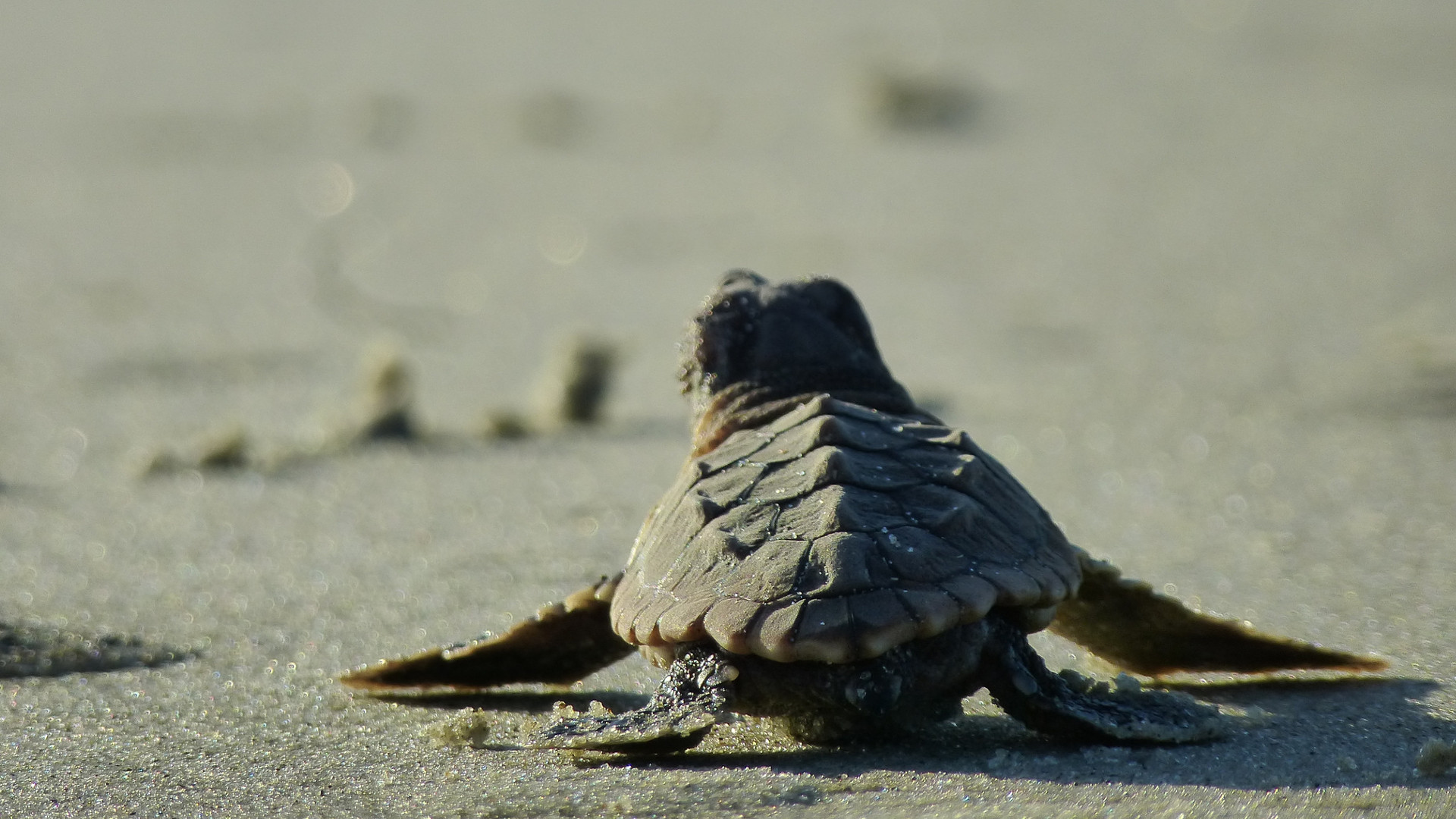When the fate of your species depends on the temperature of your incubating eggs, climate change is a big deal.
Take sea turtles, for example. Years of research has shown that the sex of turtle hatchlings depends on the temperatures of their sand-covered nests, a process called “temperature-dependent sex determination.” If temperatures are on the cool side, the hatchlings will be male. When things warm up, more females are born.
Of course, temperature has one more effect: If things get too hot, the eggs can die and fewer hatchlings — or none at all — are born. This is already happening in some places, such as Florida, according to a recent report from Oceana.
For years now researchers have warned that climate change will cause sea turtles nests to heat up, producing more females than males. This gender imbalance would eventually drive the animals toward extinction, since not enough males would be born to keep the turtles going into successive generations.
Now a new study — published today, World Sea Turtle Day, in the journal Global Change Biology — takes our understanding of these climate impacts on sea turtles even further. The paper predicts that climate change will, indeed, cause more female sea turtles to be born, which could actually result in a temporary increase in breeding populations and nests.
That will only last for a few decades, though. After the year 2100, the researchers warn, nest-incubation temperatures will become so warm that egg survival will decline dramatically. When combined with the gender imbalance that will already exist by that point, they predict that this will threaten the survival of all seven sea turtle species.
The researchers conducted their study on the Cape Verde islands, the world’s third-most important nesting site for loggerhead sea turtles (Caretta caretta). The islands, off the west coast of Africa, are also important rookeries for olive ridley (Lepidochelys olivacea) and green turtles (Chelonia mydas).
Over the course of six years, the research team gathered more than 6,600 days of sand- and air-temperature data. They also monitored the hatching success rate of more than 3,600 sea turtle nests, including more than 1,500 nests that were moved from the beaches where they were laid to a hatchery (an important step to protect the eggs from poachers).
Most of the eggs they monitored during the study did well, but that won’t last, they write. Climate models predict that air temperatures in the region will rise between 1.5 and 2.9 degrees Celsius by 2100, enough to change sex ratios and lower survival rates.
There are a lot of variables in all of this, including sand color (darker sands get hotter), rainfall levels and hurricane activity. The dates when warmer temperatures occur also matters, as more-developed turtle embryos appear to have a better chance of surviving higher temperatures, although that warming still reduces their overall fitness and may affect post-hatching survival.
The paper reveals a few potential conservation and research priorities. First, the researchers commented, conservation plans may need to focus on light-colored beaches, which won’t warm quite as much. Second, more research is needed to determine the minimum number of males required for a sea turtle population to remain viable.
Finally, the researchers conclude their paper with a call to monitor hatchling mortality for other temperature-dependent species, such as lizards. That, they wrote, “should be a key conservation priority in order to safeguard the species in a warming world.”
Previously on The Revelator:


